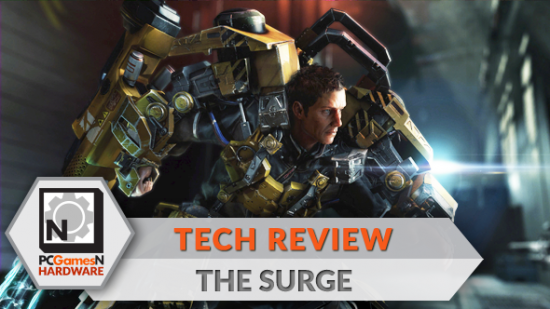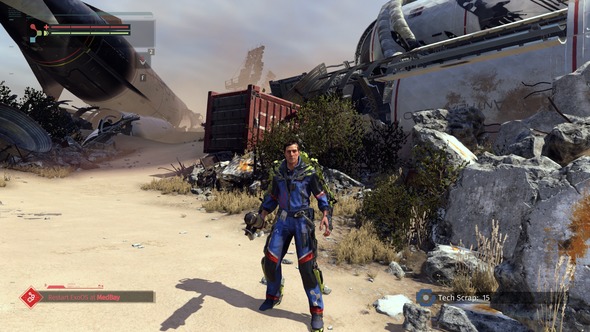The Dark Souls series may be over, but the spirit of the franchise lives on strong not just through other FromSoftware games, but in the many titles influenced by them, too. Among that number is The Surge, Deck 13’s challenging sci-fi RPG. As a lower-budget game, The Surge isn’t quite a graphical powerhouse but could, potentially, be lacking in optimisation due to limited resources. Does it perform as good as a Souls game? That’s what the PCGamesN tech review is here to find out.
Like upgrade paths and skill trees? Try one of the PC’s best RPGs.
Our tech reviews are written to offer you the broadest picture possible, focusing on hardware similar to what the majority of players have installed in their machines. We test the game on all graphical settings using an i5 powered rig with 8GB of RAM, and try to hit 60 fps with four of the most popular graphics cards. Even if your PC is not identical to our test set ups, you should still be able to estimate the performance levels you can expect from your own machine.
Graphics options
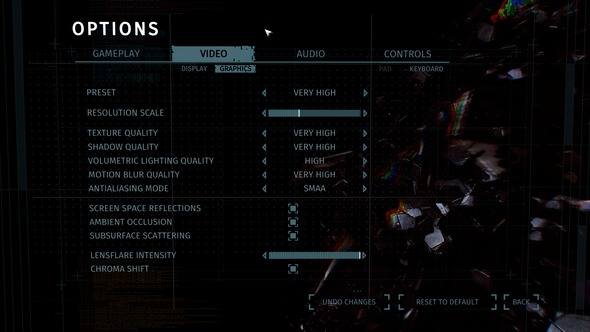
The Surge is what we’d typically consider a B-tier or double-A game; lacking the absurd budget of a mainstream release, but made with significantly more resources than an indie. The graphics options certainly wouldn’t reveal this though; there’s nothing lacking here. While the range of options is concise, the major ones are all present and correct. Texture, shadow, volumetric lighting, and motion blur quality can all be cycled between low and very high settings. Screen space reflections, ambient occlusion, and subsurface scattering use on/off toggles. You can also choose which anti-aliasing mode is used (FXAA or SMAA), and even adjust the intensity of the lensflare.
There’s no FOV option, but that’s unsurprising considering the third-person nature of the game. In other menus there’s options relating to the HUD; it can be rescaled as you wish, and certain elements can be turned on or off. It’s nicely comprehensive and largely appears to have been made with attention to detail in mind. There’s also the mandatory PC key rebinding menu. Keyboard and mouse controls seem pretty good – certainly better than the setup in the Souls games – but it’s still likely that you’d want to play with a controller for The Surge.
Graphics analysis
Tested on an Intel i5 6500 @3.2GHz, 8GB of RAM, Nvidia GTX 1060, Windows 10
For our graphics analysis we compare screenshots taken on the four standard presets of very high, high, medium, and low. Unlike the majority of recent releases, The Surge does not require the game to be rebooted to apply new texture settings. That’s certainly something to celebrate, especially if you’re making plenty of tweaks.
Very High
At the very high preset, The Surge looks pretty great. While the lower budget means that things like vegetation looks a bit yesteryear, there’s plenty of detail on show with solid texture resolutions. The concrete and rocks in the foreground look great, although the ones in the midground appear a bit smeary. There’s the odd few jagged edges going on – you can see it most notably on the red container – which I wouldn’t expect with anti-aliasing turned on at this level. Shadows are nicely defined, though.
With these settings, The Surge runs at an average of 79 fps. That means you can have everything turned up and still get a very consistent frame rate that’s above 60. While The Surge isn’t top-tier in its graphical quality it still looks good, and so this performance is evidence of great PC optimisation work from developers Deck 13.
High
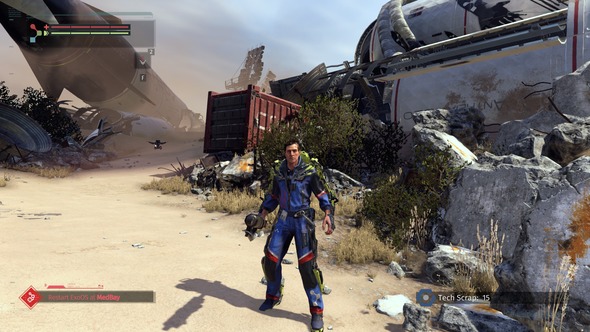
There’s very little difference between very high and high. Texture and modelwork appear to remain largely the same, but sacrifices are made in shadows. You’ll clearly be able to see how Warren’s shadow is now blurrier around the edges. The biggest change, though, is in regards to shadow mapping around the vegetation; there’s no shading at all among the bush or grass stalks.
The reduction in shadows leads to a small jump in frame rate, with an average of 81 fps. It’s a very small gain, and one that’s certainly not worth the details it sacrifices.
Medium
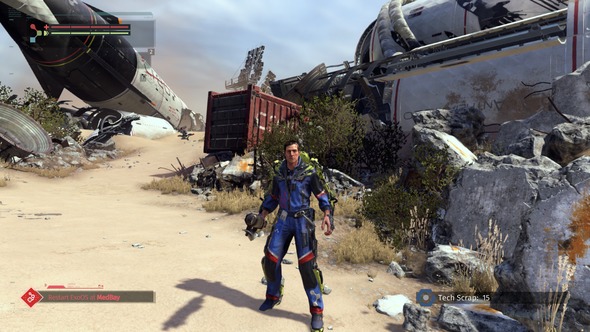
There’s a large downstep in quality at medium settings. The entire image looks fuzzy in comparison to high presets, and that’s because at these settings The Surge actually lowers the resolution of the game. This seems to be a new technique games are using as part of their preset tools, and I last saw it put into effect in Mass Effect Andromeda. You can, thankfully, set the scale back to full 1080p and keep medium settings on all other options, but the preset will default to a resolution that is a percentage lower than your native one.
The reduced resolution makes it hard to see what’s actually changed in regards to finer details, but it’s obvious that the medium preset removes even more shadows. The shady area under the rocket to the left of the scene is now fully lit, and all of the smaller shadow elements are completely removed. The resulting performance boost is significant, with the average frame rate being 117 fps.
Low

Low settings once again reduce the resolution, and the further blurring this introduces means that much of the image is difficult to clearly view. Lighting effects appear to be entirely turned off, but texture quality doesn’t seem to have taken such a nosedive.
The change in performance is insignificant, too: a mere jump of seven frames to 124 fps. You certainly wouldn’t want to play the game at this resolution, and the headroom given by this lofty frame rate means you’ll probably be able to, at the very minimum, bring the resolution back up to native settings.
Performance benchmarks
To see how The Surge performs on various hardware setups, we test the game on four graphics cards; two from Nvidia, and two from AMD. We’ve sampled the most popular cards from the current and last generation of GPUs in order to offer the most useful information.
All four cards are tested at very high settings, with every texture option set as high as they’ll go and every graphical effect turned on. For the test we play a two-minute sample that involves walking, running, jumping, dodging, and melee combat. The same section is repeated three times in order to find an average.
In the graph below you can see how all four cards perform.
The figures show some excellent reports from all four of our cards, meaning that you can play The Surge at its very best on a variety of very different systems. The least powerful card tested – last generation’s AMD R9 380 – ran at an average of 62 fps, ensuring the smooth, responsive experience that the combat demands. As for the current generation, our budget RX 470 maintained an average of 76 fps, which clearly puts it in a very good position.
Interestingly, the more expensive Nvidia GTX 1060 doesn’t perform that much better than the RX 470, clocking in at 79 fps. And while that’s certainly more than enough to play The Surge flawlessly, I’m a touch surprised that the extra horsepower of that card hasn’t resulted in something closer to 90 fps. It’s also barely an improvement over Nvidia’s previous generation, with the GTX 970 offering extremely comparable results.
How does The Surge run in 4K?
The Surge runs great at 1080p, but what if you own a 4K display? Our UHD test rig – rocking an i7 6700K CPU, an Nvidia GTX 1080, and displaying on an Acer Predator 4K monitor – copes pretty well. At a huge 3840 x 2160 resolution on very high settings, The Surge runs at an average of 45 fps, and a minimum of 35 fps. While that’s a really good result for a single GPU, it’s not quite good enough for The Surge; it’s challenging combat really does demand something closer to 60 fps. It looks excellent at 4K, though, so if you can deal with a slightly slower frame rate you may find it’s worth the trade-off.
How to run The Surge at 60 fps
If you’re running one of the cards we’ve tested you’ll no doubt be feeling pretty confident about your ability to run The Surge at a great frame rate. In this section I’d normally outline what kind of tweaks you’d need to make in order to squeeze an average of 60 fps from you GPU, but with The Surge there’s just no need. Simply set the game to the very high preset, and you’ll be guaranteed a frame rate that averages above 60 fps.
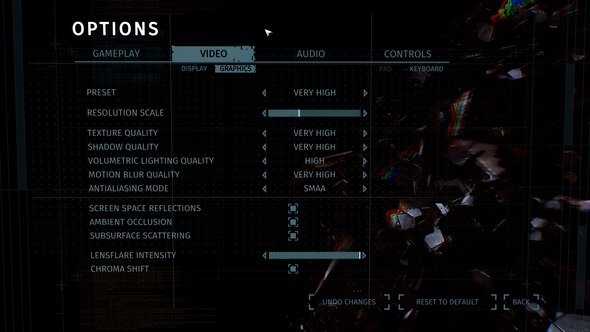
As mentioned previously, the combination of effective optimisation and an overall less-demanding game means that The Surge runs exceptionally well even on older or lower-budget graphics cards. Depending on your setup, this means you’re free to make some taxing adjustments in order to enhance the image. For example, you’ll be able to get solid performance at 1440p on a GTX 1060 without having to do too much tweaking. For anyone looking to increase performance at higher resolutions, lowering anti-aliasing seems to be the easiest and most effective trick.
Conclusion
With The Surge drawing so much inspiration from Dark Souls, it’s very important that it performs smoothly. Modders had to crowbar the original Souls to run at above 30 fps, demonstrating how important high frame rates were to its community. If The Surge is to be welcomed with open arms, it has to hit 60 fps right out the box. Or… err… right off the download?
Thankfully Deck 13 have made sure this is the case. And sure, it may not have the decadent texture work of a mega-budget triple-A game, but The Surge certainly has its own look and style that’s far from ugly. Indeed, it’s a both a better looker and stronger performer than I was expecting. The fact that every single one of our test GPUs performed at 60 fps or higher on very high settings is testament to the game’s efficiency. For anyone who doesn’t have a similar setup to the PCGN test rig, the small but solid range of options will certainly aid in finding the perfect balance. We’ve been excited by The Surge for a couple of months now, and if you are too then you should feel confident in picking it up on PC.
